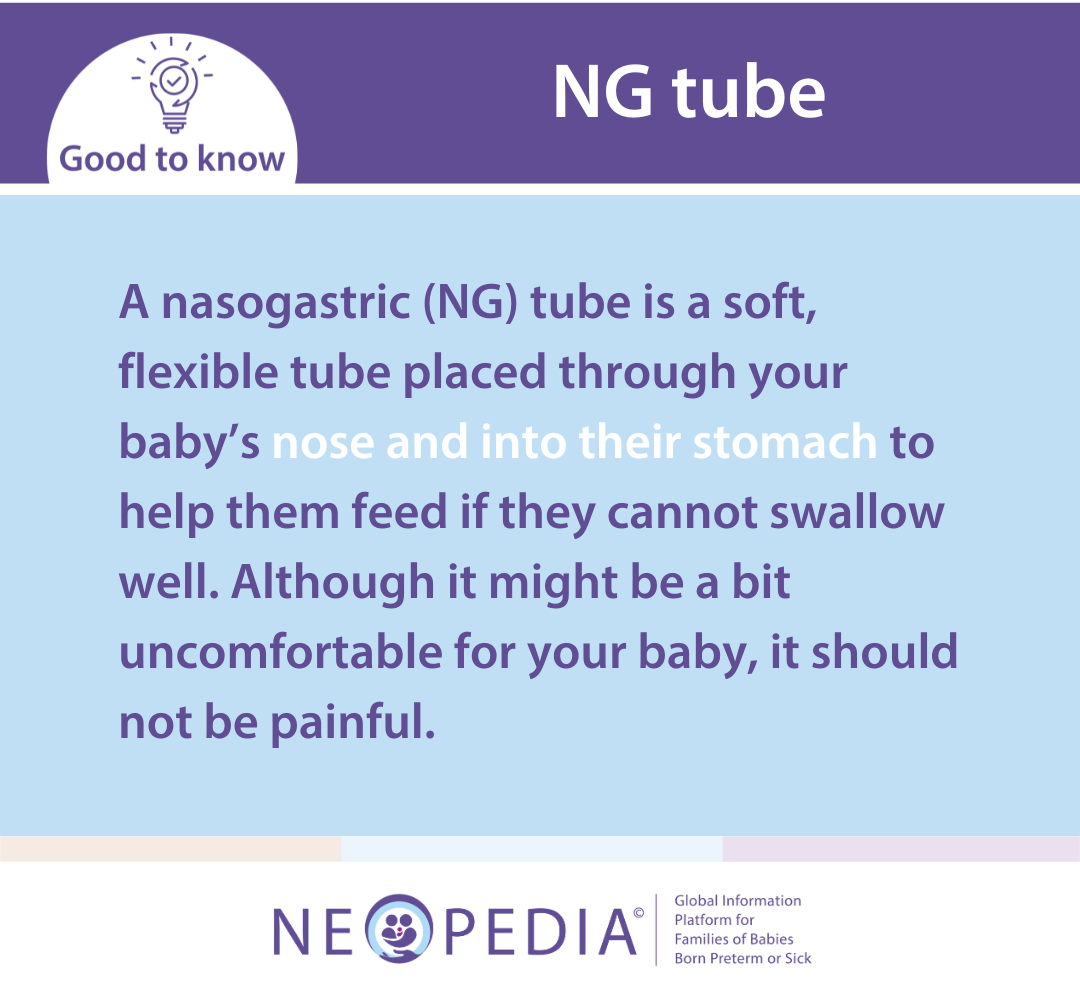
Bringing your preterm or sick baby home may involve using special equipment to support their care. This is only needed in certain situations, and your healthcare provider will fully explain everything you need to know if it applies to you.
Feeding tube through the tummy (PEG tube)
If your baby cannot feed on their own, they may need a small feeding tube called a PEG tube, placed into their stomach. This will be done in hospital, and if your baby still needs more time to feed, they may go home with the tube. You will be shown how to care for it, including cleaning the area daily with warm, soapy water. If you notice any redness, swelling, or pus, contact your care team right away.
Caring for a baby with a tube through their nose
When it is time to go home, the healthcare team will show you how to use the NG tube and care for it. In some cases, a member of your healthcare team may also be able to help with any tube changes at home.
Apnea Monitor
Preterm babies often have episodes of when their breathing stops, a condition called apnea. Before leaving the hospital, doctors make sure that your baby has been breathing normally for at least 48 hours. Generally, using an apnea monitor at home is not necessary unless there are other health concerns. If needed, healthcare professionals will show you how to use the monitor and learn basic techniques for helping your baby breathe.
Colostomy bags
Some preterm babies with severe intestinal (tummy) issues might need a colostomy, usually temporarily. This procedure involves creating an opening in the large intestine or, less commonly, the small intestine to collect stool in a pouch outside the body. If your baby had a colostomy, you would need to be trained on how to keep the area clean at home, how to change the colostomy bags, and how to track stool and fluid output to make sure your baby’s intake is right. Most colostomies are later reversed, allowing the baby’s intestines to function normally again.
Home monitors
Some preterm or sick babies may need a monitor to track their vital signs at home. If this is the case for you, your healthcare team will show you how to use it before you leave the hospital. Please consult with your NICU care team or pediatrician⍰ to determine if home monitoring is necessary and to get personalized guidance on how to use the equipment. Read more about going home on oxygen.

